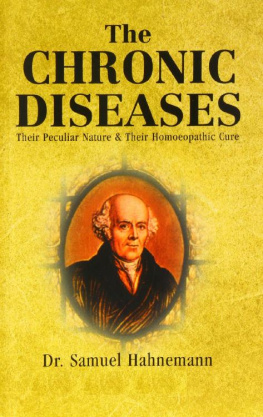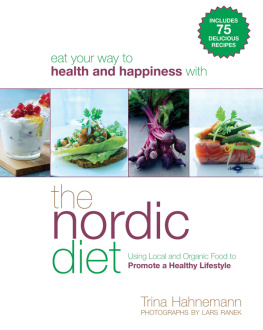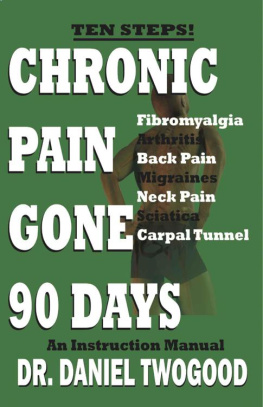Samuel Hahnemann - The Chronic Diseases-2 Volumes
Here you can read online Samuel Hahnemann - The Chronic Diseases-2 Volumes full text of the book (entire story) in english for free. Download pdf and epub, get meaning, cover and reviews about this ebook. year: 0, genre: Science. Description of the work, (preface) as well as reviews are available. Best literature library LitArk.com created for fans of good reading and offers a wide selection of genres:
Romance novel
Science fiction
Adventure
Detective
Science
History
Home and family
Prose
Art
Politics
Computer
Non-fiction
Religion
Business
Children
Humor
Choose a favorite category and find really read worthwhile books. Enjoy immersion in the world of imagination, feel the emotions of the characters or learn something new for yourself, make an fascinating discovery.
- Book:The Chronic Diseases-2 Volumes
- Author:
- Genre:
- Year:0
- Rating:4 / 5
- Favourites:Add to favourites
- Your mark:
- 80
- 1
- 2
- 3
- 4
- 5
The Chronic Diseases-2 Volumes: summary, description and annotation
We offer to read an annotation, description, summary or preface (depends on what the author of the book "The Chronic Diseases-2 Volumes" wrote himself). If you haven't found the necessary information about the book — write in the comments, we will try to find it.
The Chronic Diseases-2 Volumes — read online for free the complete book (whole text) full work
Below is the text of the book, divided by pages. System saving the place of the last page read, allows you to conveniently read the book "The Chronic Diseases-2 Volumes" online for free, without having to search again every time where you left off. Put a bookmark, and you can go to the page where you finished reading at any time.
Font size:
Interval:
Bookmark:
Chronic Diseases
HAHNEMANN Samuel
The translation here submitted to the public is the second translation of this work into English, it having before this been rendered by Dr. Charles J. Hempel and published by Wm. Radde in the years 1845-6. When it was proposed to reprint this translation, there was a strong protest made against the old version on the ground of its being to some degree inexact, and on account of its omitting not only the initials of the provers but besides this, also a great number of symptoms. These complaints have been proved well founded, especially with respect to the latter part of the work. We have taken a hundred symptoms at random here and there and compared them with the original, with the following results : in Alumina 555-655 we found only the omission of a part of symptom 556 and a partial omission and joining together of symptoms 617 and 618. So also in Graphites there is no omission except 53 (a repetition) in the first hundred, nor any other until we reach 200, 201 and 202 which are omitted. In the first hundred of Nitri acidum, however, we find 13 omissions, namely 6, 30, 32, 37, 38, 40, 43, 45, 59, 64, 65, 67 and 69. So also in Zincum from 1135 to 1235 we find 10 omissions, i. e., 1136, 1138, 1152, 1170, 1187, 1197, 1207, 1220, 1222, 1225 and 1235; while 1153, 1195 and 1295 have one-half of their substance omitted. Between 1236 and 1335 there are 23 omissions, namely 1245, 1269, 1278, 1288, 1290, 1292, 1293, 1294, 1297, 1298, 1299, 1302, 1303, 1305, 1306, 1308, 1313, 1316, 1320, 1324, 1331, 1332, 1335, while one-half of the substance of symptoms 1287, 1296, 1312, 1315 and 1325 is omitted; showing the omission in this extreme case of over one-fourth. The omissions are rather impartially distributed, about one-third of the above omissions being symptoms of Hahnemann, fully one-third, those due to Nenning and the other third, distributed impartially among the various other provers.
These omissions made a new translation necessary, which was accordingly made independent of that of Dr. Hempel, though the earlier translation was consulted especially where there was any obscurity or ambiguity in the original. There is no question but that Hempel is right in what he says of the involved phraseology and the lengthy periods of Hahnemann; still we did not think it best to follow his mode of rendering, which according to his preface consists in "mastering the sense of a period, and then embodying it in a free manner in the foreign tongue". We have preferred to follow in this respect the example set by Dr. Dudgeon in his admirable translation of the Materia Medica Pura (London, 1880); he has faithfully rendered not only the ideas but also the expressions of Hahnemann. It is only by thus closely following the author, that we shall be sure to reproduce the ideas of the author and, indeed, in their own setting and thus in their native vigor and in the author's own original style. We have accordingly preserved the long periods of Hahnemann and his own precise, if sometimes redundant, phraseology; though, of course it was necessary to invert the periods and to arrange the phrases into the English order.
This applies chiefly to the first theoretic part of the work, and in this part we would especially acknowledge the able assistance of Dr. Pemberton Dudley, who has taken care that too close a clinging to the German original might be avoided.
We have generally endeavored to translate the same German word by the same English word, except where words have several meanings. A few particulars may here be mentioned. The frequently recurring adjective drueckend, which by Dr. Hempel is usually rendered with "aching" and by Dr. Dudgeon with "pressive" or with "aching", we have uniformly rendered with pressive; while we use "ache" to translate the German weh. There are a few words which require a varied translation according to the context : Brust is used both for "chest" and for "the female breast", so that e. g. die rechte Brust may mean either "the right breast" or "the right side of the chest"; Hals means either "throat" or "neck"; Schenkel may mean either "the thigh", "the leg" or "the whole lower limb", though for these parts usually the more specific terms Oberschenkel, Unterschenkel and Bein are used; Gesicht means either "face" or "sight". We have taken care to translate these terms according to the context in every case, though the learned reader will remember that in some of these cases there is a little ambiguity. One of the German terms which seems to have no good English equivalent is Eingenommen with respect to the head. It means literally "occupied" and describes the sensation produced in the head by a cold, where the parts are as it were benumbed and incapacitated from acting freely. Dr. Hempel has usually described this state of the head by "obtusion", Dr. Dudgeon usually by "confusion" or "muddled feeling". We have usually rendered it with "benumbed feeling", though as none of these terms was quite satisfactory, we have also sometimes used "muddled feeling" or "obtuseness".
As was done in the Materia Medica Pura published in London, so we have also in this work printed the names of old school authorities cited with small capitals, while the names of other provers are in italics, so that it may be seen at a glance, whether the symptom was produced by an intentional proving (or from clinical experience), or whether it was the result of accidental poisoning or an overdose by an observer of the old school.
The Anti-psoric Medicines have been annotated by Dr. Richard Hughes, of Bath, England, who in the course of his researches found occasion to rectify the numbers referring to the pages, etc. of a number of the citations. These at his suggestion were at first merely entered in the translation instead of the figures given by Hahnemann; but on second thought, it seemed more useful to give them among the other notes given by Dr. Hughes, as showing his diligence and the care given by Dr. Hughes, as showing his diligence and the care given by him to these particulars.
While there seemed to be no necessity for an index to the Anti-psoric Medicines, since this is furnished in the various repertories, especially in that of Boenninghausen, it was thought useful to have an index to the first or theoretical part, and this was accordingly prepared by the translator.
L. H. TAFEL
* * * *
I have been desired, by the publishers of this new translation of Hahnemann's Chronic Diseases, to exercise a certain editorial superintendence over that what may be called the Materia Medica section of the work. I shall do this mainly by notes appended to each pathogenesis; but in the present place I desire to state what is known in a general way about the symptom-lists in question, * and what I propose to do for them as they severally appear in the following pages.
I. In 1821 Hahnemann had been compelled to leave Leipsic, and, in difficulty where to find a place in which he could practice in freedom, had been offered an asylum in the little country town of Coethen. Thither he repaired, and there he remained till his removal to Paris in 1835. He now ceased to attend acute disease, save in the family of his patron, the reigning Duke. But his fame brought him for consultation chronic suffers from all parts; and the varied, shifting, and obstinate morbid stated under which so many men and women labour were pressed closely upon his attention. The result was the theory of chronic disease which (in its latest shape) will be found in these pages, and which traces so many of its forms to a "psoric" origin. To meet the manifold disorders thus induced it seemed to him that a new set of remedies were required. Accordingly, of the three volumes of the first edition of the present work published in 1828, the two latter contained what seem to be pathogeneses of fifteen medicines hitherto strange to his Materia Medica Pura, and in some cases to any Materia Medica whatever. These medicines were :
Next pageFont size:
Interval:
Bookmark:
Similar books «The Chronic Diseases-2 Volumes»
Look at similar books to The Chronic Diseases-2 Volumes. We have selected literature similar in name and meaning in the hope of providing readers with more options to find new, interesting, not yet read works.
Discussion, reviews of the book The Chronic Diseases-2 Volumes and just readers' own opinions. Leave your comments, write what you think about the work, its meaning or the main characters. Specify what exactly you liked and what you didn't like, and why you think so.












